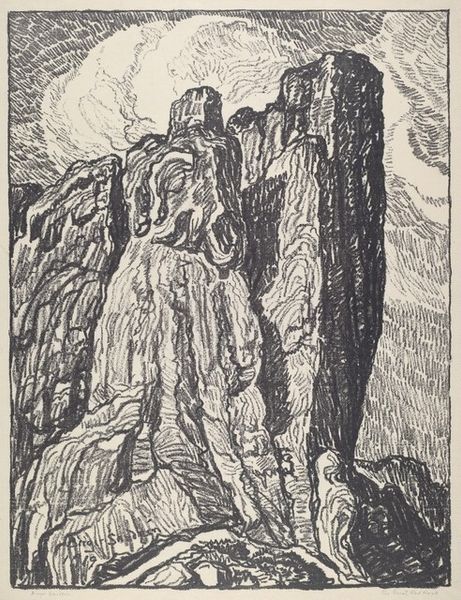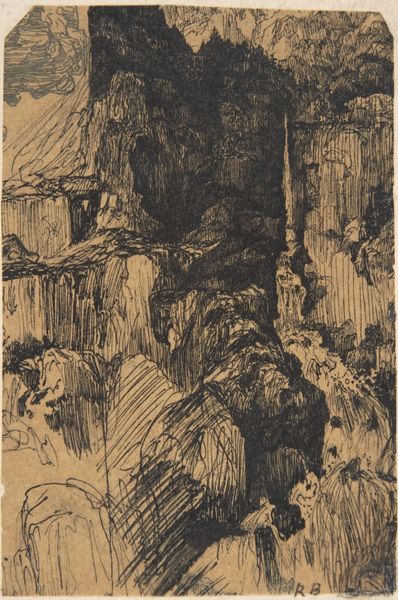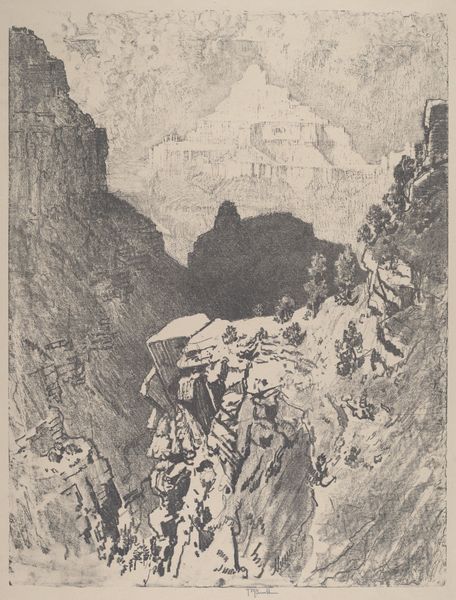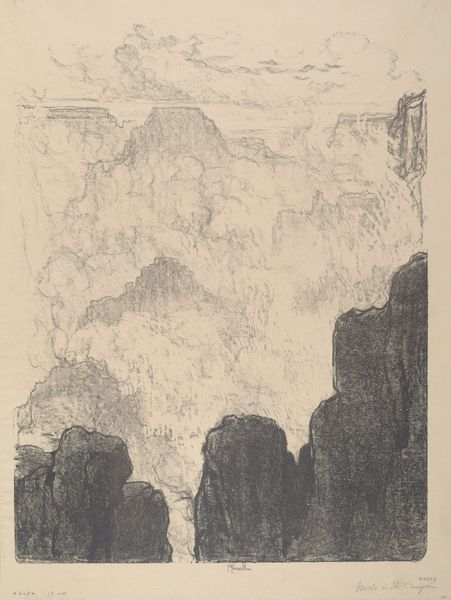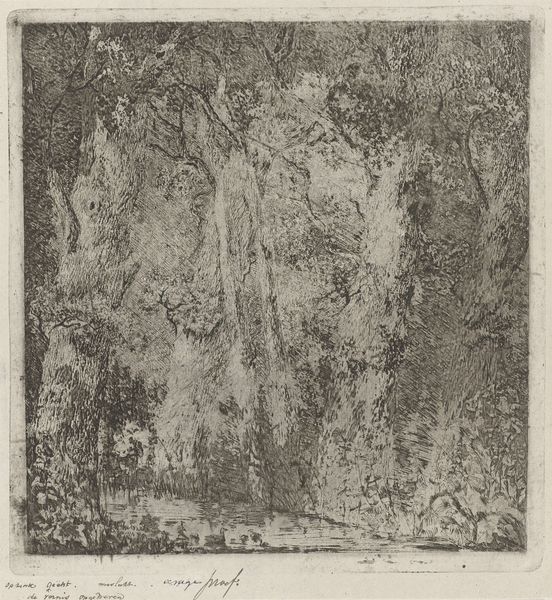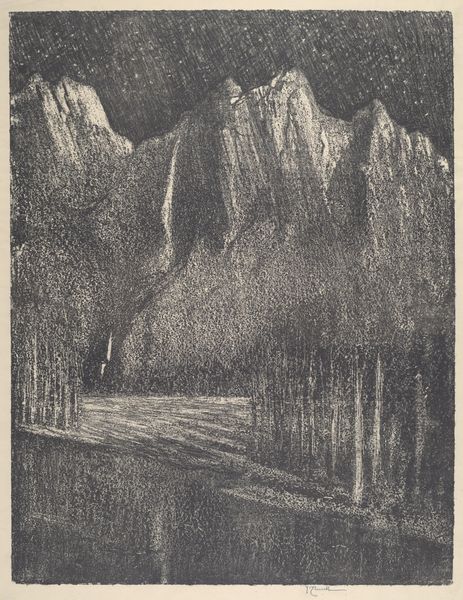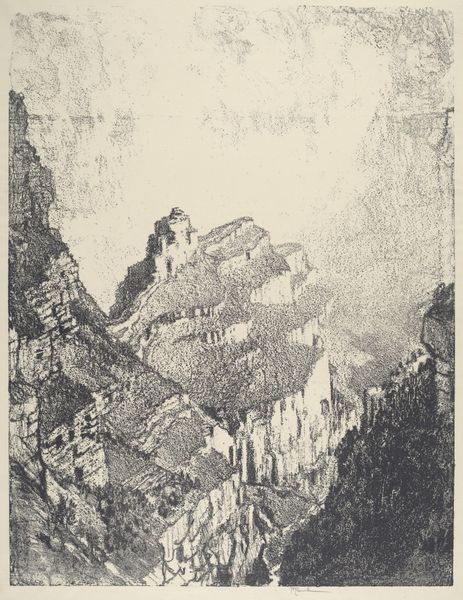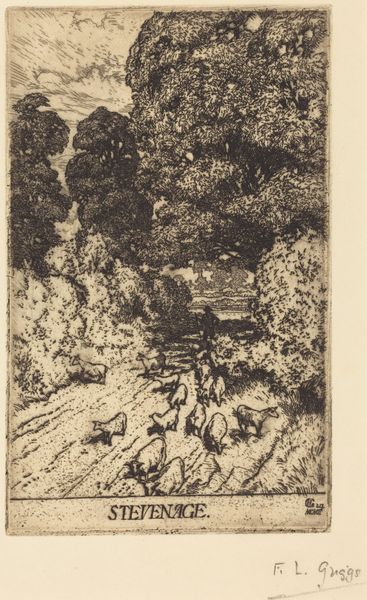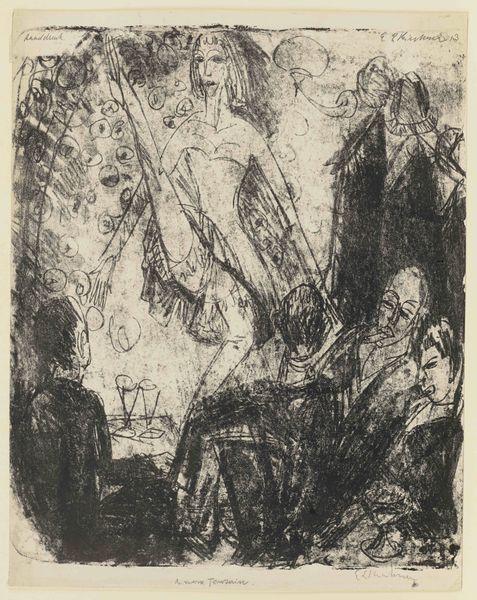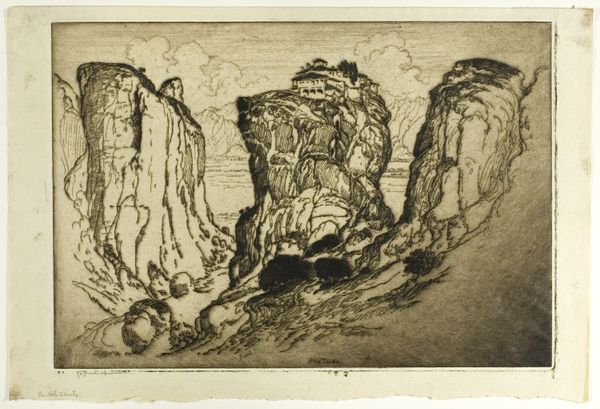
print, etching
# print
#
etching
#
landscape
#
geometric
#
realism
Copyright: National Gallery of Art: CC0 1.0
Curator: Let's turn our attention to Joseph Pennell's etching, "The Bright Angel Trail," created in 1912. It presents a striking view of the Grand Canyon. Editor: The initial impression is one of vastness. The artist captures the dizzying scale of the canyon, using strong lines to emphasize the sheer drop and immense geological formations. You can almost feel the arid air. Curator: Pennell was known for his landscape work, especially cityscapes, and often tied them to narratives of progress and power. In this context, depicting the Bright Angel Trail suggests a commentary on humanity’s interaction with monumental landscapes, their capacity for domination or harmony. It evokes manifest destiny narratives as they shape land use policies. Editor: And the printmaking process itself contributes to this. The act of etching, using acid to carve into a metal plate, mirrors the erosive forces that carved the canyon itself over millennia. It speaks to the power of geological forces, but also of human intervention. What do you make of the way he contrasts the texture? Curator: The rough texture used to illustrate the canyon's geological formations versus the relative smoothness of the sky creates a fascinating dialectic. Pennell invites contemplation on the grand narratives encoded in nature versus culture. This print comes after his role illustrating American building of the Panama Canal – another place for him to reflect on technology's impact, I wonder what he's reflecting on here. Editor: It’s intriguing how he transforms this natural wonder into a seemingly geometric pattern, dissecting its elements into near-abstract shapes. The use of light and shadow is also instrumental here, obscuring some aspects to enhance the drama and spatial depth of the landscape, rendering the materials into different gradients of black. Curator: Exactly. Pennell also touches upon broader societal currents around land use and conservation in the early 20th century. Indigenous erasure from this land is palpable. Editor: Reflecting on it, the material and the making intertwine seamlessly here to depict both the magnificence and the latent impact that altering a place might have. Curator: Absolutely. "The Bright Angel Trail" provokes crucial dialogue on cultural imposition in even seemingly barren geographies.
Comments
No comments
Be the first to comment and join the conversation on the ultimate creative platform.
